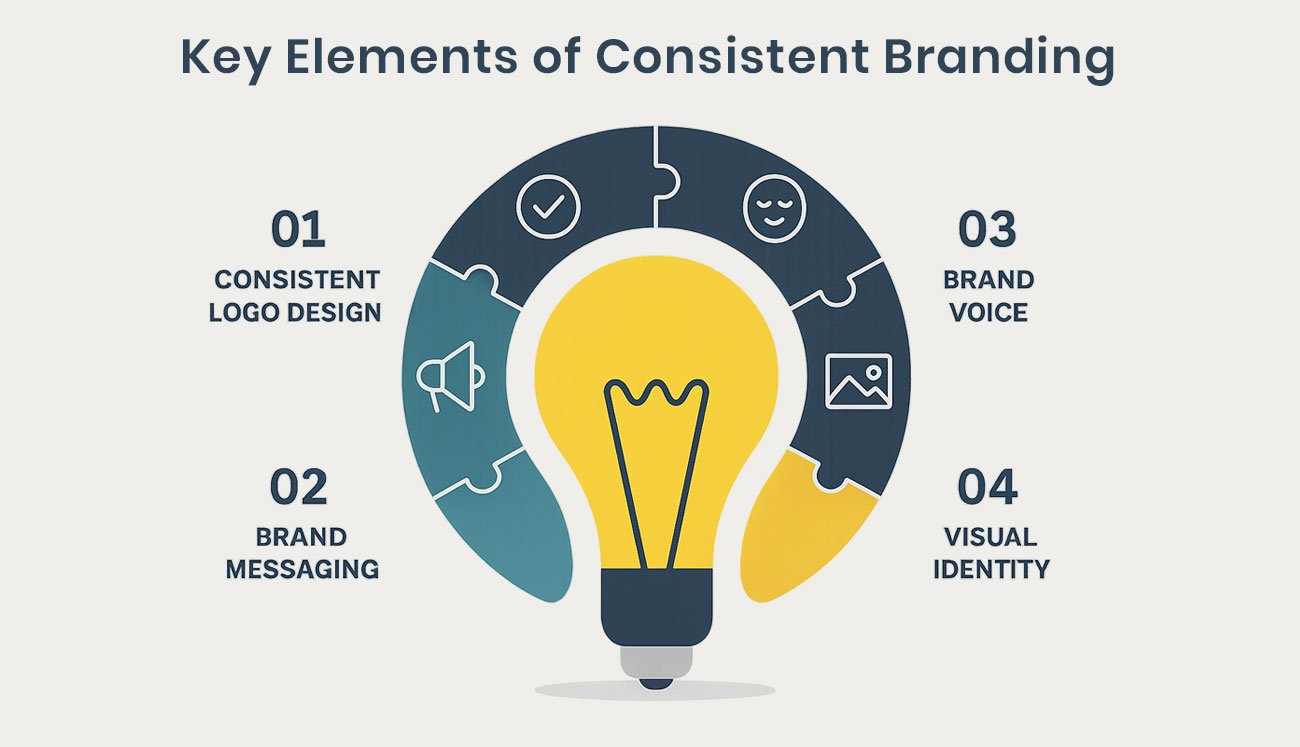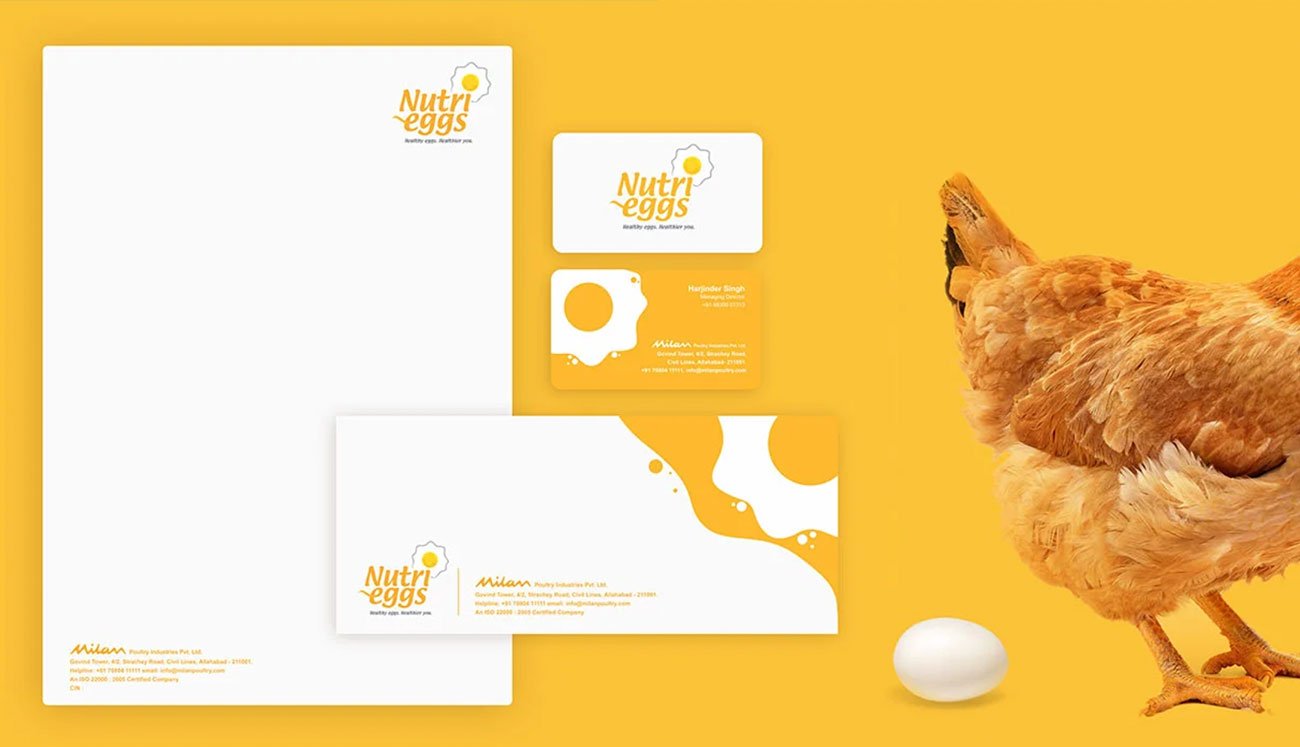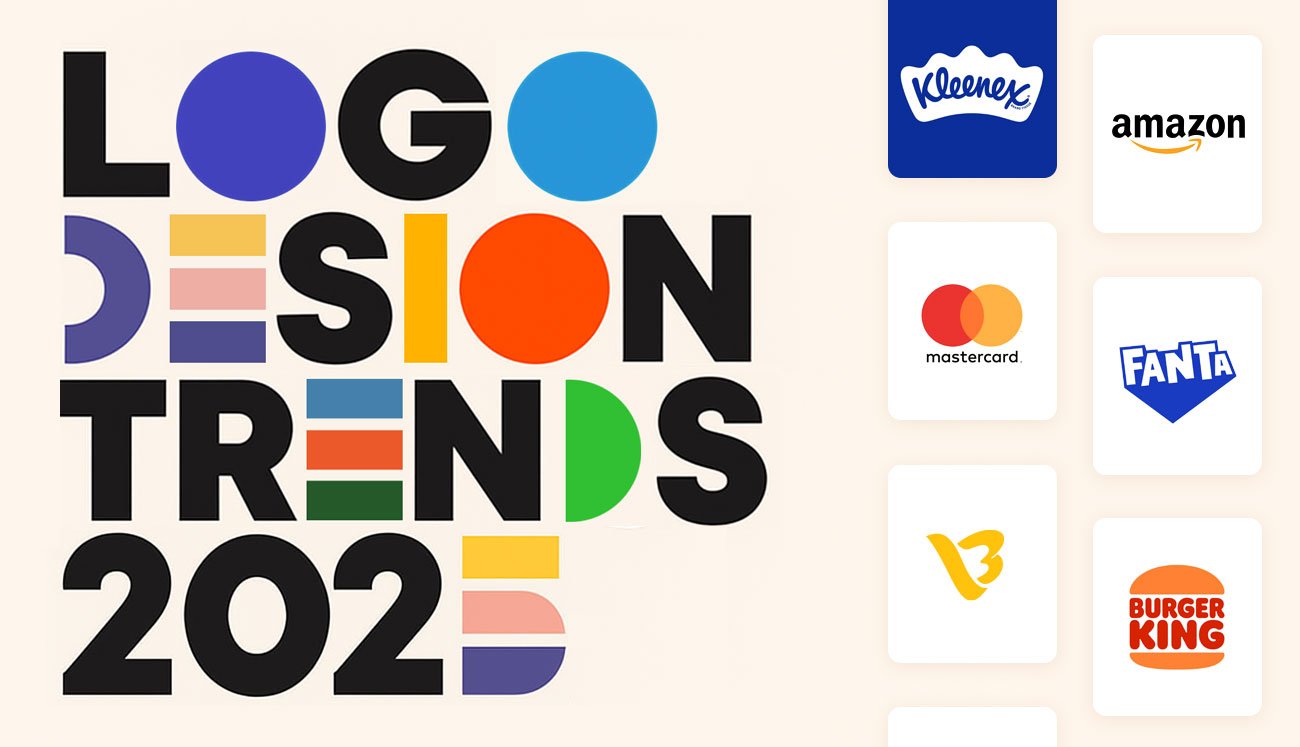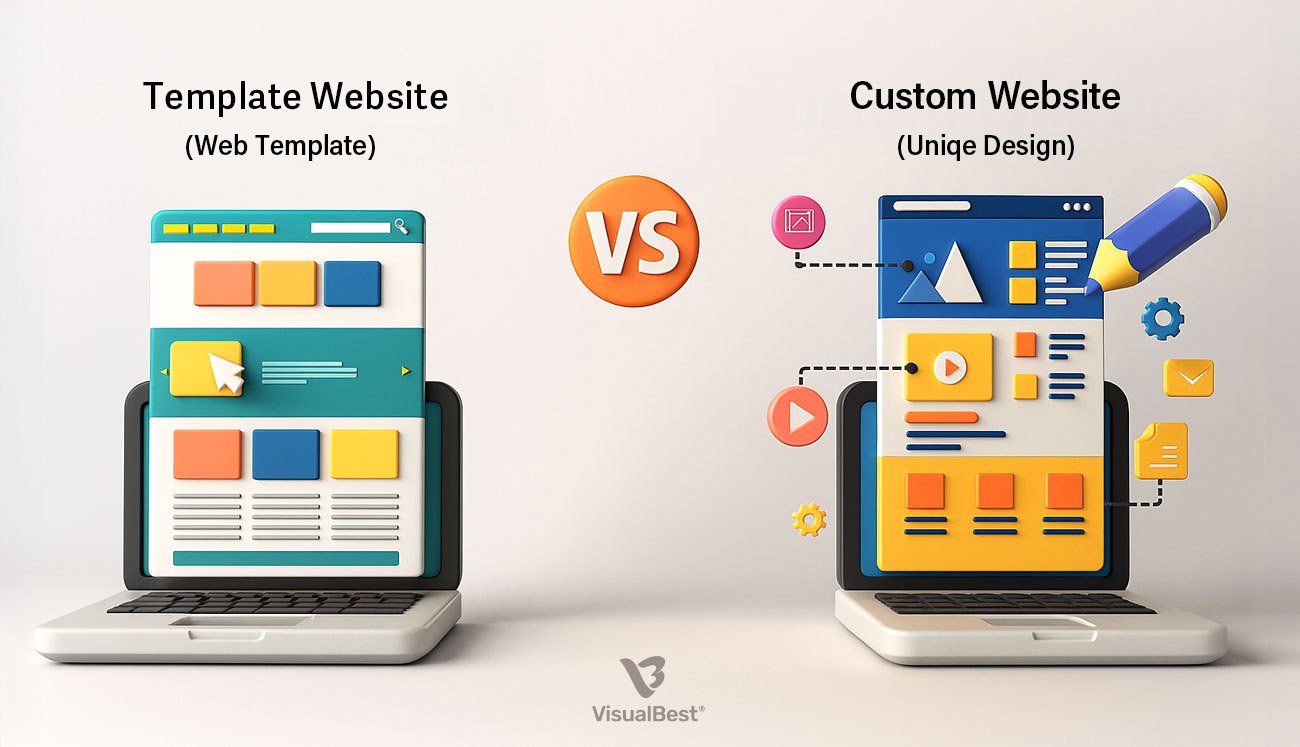Brand Marketing , Branding
Why Brand Consistency Matters Across Digital & Print Media

Imagine walking into a Starbucks in New Delhi and then visiting one in New York. Despite the geographical distance, the ambience, menu design, and overall experience remain remarkably consistent. This uniformity isn’t accidental; it’s a result of meticulous brand consistency across all platforms.
Consumers in modern business environments interact with brands because they experience many different contact points, which include websites, together with social media platforms, but also include print advertisements. A unified brand image should exist between different marketing platforms. Dissimilarities between customer touchpoints lead to brand dissonance, which pushes potential customers toward competing offers.
Brand consistency matters in digital and print media for creating trusting relations and improves customer familiarity, which ultimately drives sustained customer engagement. The customer’s brand experience must remain consistent no matter which platform or medium they encounter it, whether Facebook or physical pamphlets. A lack of brand unity prevents customers from producing dependable perceptions, leading to diminished brand relevance and memorability. A single consistent look that ties digital and print media together creates professional images while showing reliable services to consumers.
The current media fragmentation calls for unprecedented importance of maintaining brand consistency between digital and print platforms. A well-organised customer brand experience establishes trust relationships and boosts recognition effectiveness, which leads casual viewers to become dedicated clients. Over 60% of brands believe maintaining a strong, consistent brand is important when generating leads and communicating with existing customers.
To succeed in an intense market competition, your brand needs visibility along with strong memorability. Consistency remains the most successful method to reach this goal. Both startups and global companies maintain the same universal principle because consistency produces clarity when developing their logos or launching advertising campaigns. And clarity builds trust.
The Importance of Brand Consistency Across Different Platforms

Building Trust and Credibility
A consistent brand instills confidence in your audience. The public feels reassured when they encounter repetitive colour schemes with standardised typography usage combined with a consistent tone and logo exposure throughout all communication channels because this repetition signals a reliable brand presence. Studies show that companies maintaining brand consistency can increase their revenue by as much as 33%.

The buying process of a customer heavily depends on trust factors. Blueprints that align your printed flyer with your website design, alongside matching messages between LinkedIn posts and corporate brochures, demonstrate design focus to consumers who actively notice these elements.
Consistency reduces cognitive dissonance. People benefit from this approach since it delivers the ability to determine and grasp brand expectations. The reliability offered by consistent brand messaging proves essential in industries like healthcare, along with finance and legal services, because trust serves as a fundamental necessity. The consistent use of brand voice throughout customer service interactions and in website checkout pages and promotional emails dictates the success or failure of maintaining customer loyalty for e-commerce and SaaS companies.
Enhancing Brand Recognition
When consistency functions in a brand mission, it produces an unmatched ability for people to recognise your company. Visual branding elements that use logos and colour choices together with proper messaging and mission statements produce brand recognition among consumers. The brand becomes instantly memorable to viewers through consistent element use across every channel, even when content displays no text. The distinctive script used in Coca-Cola advertisements allows you to recognise their branding, while the Nike campaign style enables you to identify their platform instantly through their unique layout. When your brand maintains uniformity across multiple digital interfaces, consumers can move their established brand knowledge from active touchpoints to additional screens that include mobile devices and desktops.

This recognition fuels customer loyalty. Your content achievement becomes higher because users feel confident that they recognise your brand, so they become more active and subscribe and spread the word about your services. The sense of belonging brings customers back for life while making them brand champions who recommend you to others.
Improving Customer Experience
Modern consumers expect seamless experiences. Users expect design consistency between your Instagram account and your website and between your printed postcards and your app because it creates a cohesive and unified user experience. The enforcement of quality control eliminates any confusion through the use of uniform tone and style formats. A consistent brand experience across platforms leads to better user satisfaction, which develops brand loyalty while increasing business value.
Organisations now view omnichannel experience as the fundamental standard to achieve exceptional customer interaction. When your mobile app experience stops matching your website design and printed brochure looks unlike your latest YouTube advertisement, then customers sense a divide between your various platforms. The absence of consistent user interface standards results in poor customer experiences, which additionally reduces conversion rates.
Streamlining Internal Workflows
Research shows that a strong brand identity streamlines internal operational processes. Studio guidelines that provide simple assessment and broad distribution help marketing teams complete work more efficiently as their performance stays steadfast. Multiple staff members from design teams to copywriters, to brand management teams can collaborate better, which leads to accelerated production cycles and fewer project review rounds. Brand material production speeds up through improved interdepartmental cooperation, which empowers brand consistency in print design, format & material to be a more precise choice.
The creative production period reduction through the application of guidelines generates increased team productivity. Designers who have immediate access to pre-approved templates and brand kits can finish their work tasks at a faster pace. Branded material creation by less experienced team members becomes possible through this framework because they do not need continuous oversight.
Challenges in Maintaining Consistency in Digital and Print Media
Platform-Specific Design Requirements
The needs of each platform demand unique compliance standards and specifications. Visual content designed for social media must meet different display screen requirements. Print publications need exacting resolution requirements combined with CMYK colour mode settings and defined dimensional specifications. It is impossible to produce designs that can work for everyone under one universal standard. The main issue involves maintaining brand visual consistency across platforms without being restricted by the specific technical requirements of each platform.
The appearance of typography can vary significantly when displayed through different internet browsers and printing systems. The refinement of sans-serif font appearance online doesn’t necessarily translate to readability in printed flyer content. Successful platform adaptation requires careful modifications that honour brand identity, together with respecting each platform’s distinctive features.
Changing Technologies and Consumer Behaviour
Consumer behaviour is constantly evolving. Digital practices undergo continuous modifications through the processes of algorithmic evolution and trend development, along with practice optimisation changes. Print plays an active role in evolving media patterns through new publication formats and alternative paper materials.
Modern-day marketing relies on AR filters while also employing QR codes for interactive print advertisements as well as targeted direct mail. Every technological improvement makes branding more challenging to manage. Making a brand identity identical between TikTok videos and trade show booths demands careful strategising, together with specialised implementation.
Cross-Functional Team Alignment
Different departments within numerous companies handle separate forms of media independently of each other. The management of print operations usually occurs either at external vendor facilities or within independent divisions inside the company, while digital teams handle web and social platforms separately. Brand interpretation becomes inconsistent when organisations fail to establish proper guidance and maintain proper communication about brand representation. Different platforms often produce digital campaigns that seem modern and creative, while print materials become outdated and fail to align with the brand identity.
Several separate units result in design elements and messaging that fail to match. Organisations should support company-wide collaborative efforts against brand inconsistency by developing central platforms together with periodic brand check-ups and joint training initiatives.

Scaling Brand Assets Globally
Growth, along with market expansion, makes it significantly harder for brands to maintain consistent expression across different languages while navigating cultural differences and multiple regional teams. You need to guarantee the correspondence between the poster developed at Tokyo headquarters and the digital advertisement built at Toronto offices. When organisations lack central brand governance oversight, they will face unavoidable inconsistencies within their branding platform.
Read More: The Ultimate Guide to Rebranding
The brand governance process encompasses both visual materials and matching cultural messages throughout their implementation. A casual tagline suitable for one market can turn into a culturally inappropriate message for another market. The achievement of sustained brand consistency across digital platforms requires more than repeating design elements because it involves transporting essential brand messages throughout global markets without compromising brand unity.
Best Practices for Ensuring Brand Consistency
Develop a Comprehensive Brand Style Guide
The brand style guide functions as the fundamental reference point for all brand-related decisions. The document provides concrete rules about the proper methods to use logos, together with instructions for typography selection and colour guidelines and appropriate imagery standards and verbalisation guidelines in addition to other directives. The document serves as an authoritative and unified reference guide for every department and vendor, and external collaborator working with your brand.
The guide establishes clear guidelines for brand representation, which helps all team members properly communicate the brand through various platforms like press releases and Snapchat filters. A well-designed guideline sets out specific visual behaviour rules alongside tone strategies across different user groups, accompanied by icon protocols and image best practices and accessibility support.
Large brands take their brand guidelines to another level by creating interactive portals that let users obtain assets and access instant updates backed by artificial intelligence tools for visual alignment testing. Through these digital portals, teams gain simplified access to follow brand guidelines, which supports creative output inside defined boundaries.
Implement Centralised Brand Management Tools
Within modern organisations, the implementation of brand asset management solutions like Frontify and Bynder and Canva for Enterprise acts as a bridge to unify vendor and team processes. All brand-related materials, such as logos and templates, along with videos and infographics managed through digital platforms that act as centralized hubs for all brand assets.
A unified system guarantees that everyone utilises brand elements that come from the most recent updates, so teams avoid version problems. Administrators can manage permission levels while tracking platform usage and establishing feedback channels through these centralised brand asset management systems. The system proves vital for organisations that handle external partners worldwide alongside international marketing components. Quantifiable results emerge from implementing appropriate tools that deliver benefits to digital as well as print marketing activities.
Train Employees Across Departments
Brand training programs need to extend beyond the teams who manage visual identity and market communications. Every team member—whether in sales, HR, or customer service—represents the brand in some way. The organisation should schedule regular training events alongside introductory handbooks and periodic refreshment classes to help everyone recognise the brand’s fundamental values alongside its vocal identity and visual elements.
Authentic training exercises implemented as quizzes with team-building activities and authentic branding scenarios facilitate deeper understanding among participants. The strategy leads to dedicated engagement from staff members beyond simple following of rules, thus generating powerful brand advocacy within developmental teams. The implementation enables each worker to represent their organisation through their daily activities.
Align Campaign Planning Across Media
On numerous occasions, print and digital campaign development takes place without any form of integration. The campaign initiation needs to involve unified sessions for brainstorming with all stakeholders, who range from digital strategists to print vendors. Consistent communication begins at the project’s start through unified collaboration for messaging content and visual elements, along with timing requirements.
A coherent approach enables unified campaign messaging when businesses maintain identical elements between their platforms, as demonstrated by hashtag integration between printed materials and social media posts and initiatives. Healthcare communications using printed booklets include QR codes that direct readers to matching web pages, which use identical fonts and colour schemes.
Strong message alignment between different platforms provides better campaign outcomes since it allows increased audience engagement across multiple channels. When messaging provides a smooth experience that feels natural to users, they become more likely to engage with content.
Real-World Case Studies: Brands Who Nail Consistency
Apple: Seamless Across All Touchpoints

Apple functions as the standout example of maintaining brand consistency throughout its business operations. Apple maintains a uniform visual and emotional experience that consumers encounter while interacting with their marketing materials, regardless of the medium they choose – from magazines to keynotes to websites and stores. The brand maintains similar design elements throughout its visual spectrum, starting with minimal white backgrounds, extending to sleek typography and minimalist photography, which results in an equivalent printed and digital brand experience.
This consistent experience has paid off—over 92% of iPhone users say they’re likely to stick with Apple for their next smartphone purchase, underscoring the power of consistent branding in customer retention.

Starbucks: Consistency in Experience

The global power of the Starbucks brand exists because the company maintains identical brand elements from store locations to packages and apps, through to all marketing content. All branded clothing items, ranging from loyalty program accessories to seasonal promotions to barista aprons, maintain consistency in design throughout the Starbucks brand. Inside and outside their stores, Starbucks maintains a consistent brand identity through their mobile app and menu items and in-store visual elements, which embody sophistication and cosiness alongside community connection.
Coca-Cola: Decades of Timeless Branding

Coca-Cola boasts a unique position as one of the rare brands that has maintained its brand identity for an entire hundred years. The brand elements that define Coca-Cola from its recognisable red hue through its historic script to its familiar bottle shape appear consistently across all advertising platforms, including printed posters, digital ads, video content and point-of-purchase displays. The regional marketing of the brand operates within standardised brand codes, which maintain consistency across different markets while accommodating cultural adjustments.
This enduring brand consistency has a real financial impact—Coca-Cola ranked 7th among the world’s most valuable brands in 2023, with a brand value of $106.1 billion.
Slack: Uniform Voice and Visuals

Digital-first consistency serves as a signature feature of the modern communications platform Slack. Every digital piece, from tweets to help documents to blog articles to interface buttons, expresses their approach of friendliness through casual communication and helpfulness. The visual identity, consisting of their distinctive vibrant colour scheme and circular design elements, unites product displays along with print materials produced for marketing purposes.
How Visual Best Supports Brand Consistency Efforts
Visual Best is a full-service creative agency that specialises in aligning your brand identity across platforms. Here’s how Visual Best helps businesses master brand consistency:
- Strategic Brand Consultation: Helping you define core messaging and visual identity.
- Design Execution for Print & Digital: Creating brochures, websites, presentations, social graphics, and more that reflect your brand ethos.
- Template Development: Crafting branded templates for ongoing use.
- Brand Audits: Reviewing your current assets to spot inconsistencies.
- Training & Documentation: Equipping internal teams with guides and tools to sustain consistency.
With an experienced team and a design-first approach, Visual Best ensures your brand stays cohesive, impactful, and competitive in a multi-channel world.
Conclusion
Modern business operations demand an absolute adherence to brand consistency through digital and print media interactions. A consistent branding approach enables businesses to establish recognition and trust and develop emotional bonds with consumers, which creates enduring brand impressions. Every medium in which a brand interacts with customers creates space to highlight core values and messaging. This includes websites, social media communication and printed documentation.
Consistency presents numerous obstacles for businesses to overcome during their maintenance. Brands face difficulties maintaining consistent brand identities because they need to unify fragmented teams while adapting to varying platform requirements and handling shifting brand identities. Companies that follow best practice measures, including brand style guide creation and template utilisation and regular brand audits, can achieve consistent branding across all touchpoints.
The advantages of maintaining uniformity throughout all brand communication are straightforward to see. The research shows that businesses that keep their brand elements unified achieve greater sales results while consumers become more dedicated to their brand representation. Businesses that operate in today’s competitive market benefit from consistency, through which they can create meaningful connections with customers amidst the constant flow of messages.
Brand consistency across digital platforms requires an active commitment beyond marketing because it ensures a reliable and interconnected brand experience, which consumers recognise and feel connected to. Business success extends logically from maintaining consistency since it simultaneously builds a stronger reputation and establishes sustainable long-term performance.


















